The tsunami occurred during a local holiday for the December solstice, striking a number of popular tourist destinations, including the Tanjung Lesung beach resort in the west of Java. Eyewitness reports indicate there were two separate waves, with the second, larger wave causing the most damage.
The tsunami was caused by a violent eruption of Anak Krakatau (Fig. 1), the "child" of Krakatoa, in the Sunda Strait. At approximately 9pm local time (2pm GMT), a violent eruption that potentially measures 4 on the Volcanic Explosivity Index (VEI), triggered a slope collapse and a large portion of the southwestern flank slid into the ocean. The sudden displacement of the ocean from this landslide resulted in a tsunami, which rapidly travelled across the strait to Java and Sumatra, building into a large deadly wave in the shallow water before making landfall around half an hour later.
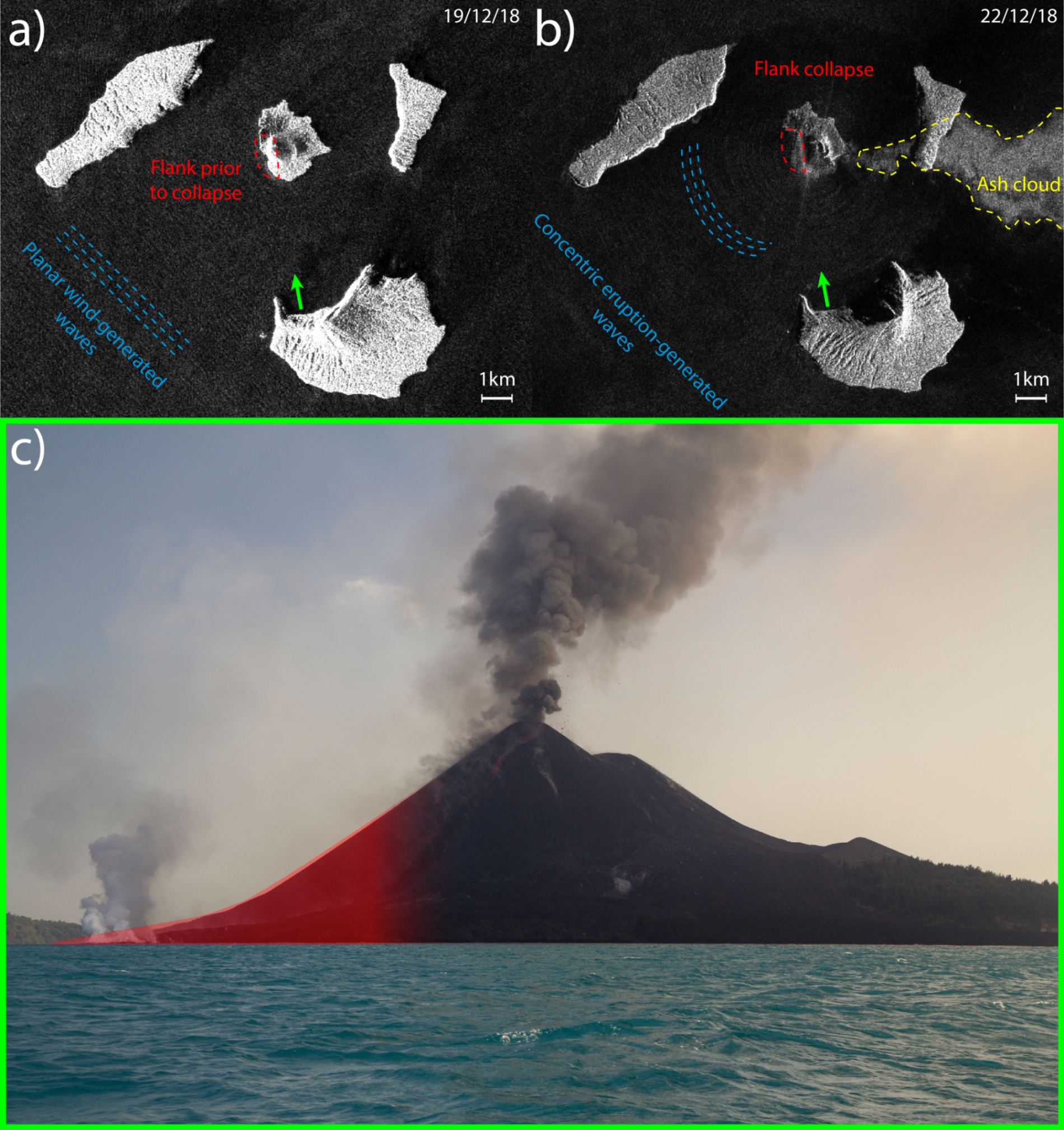
Satellite images from the European Space Agency’s (ESA) Sentinal-1 satellite show the island before (Fig. 2a) and after (Fig. 2b) the collapse, with a large segment (marked in red) in the southwest no longer visible. Additionally, the satellite images show a marked change in eruptive activity, with a large ash cloud clearly visible on 22nd December 2018, and a change from waves in the ocean primarily generated by the wind, to concentric waves driven by continuing explosive eruptions.
Until the eruption intensity abates, we are unable to get close enough to the volcano to ascertain the exact extent of the slope failure, though satellite imagery in conjunction with field photographs prior to the collapse (Fig. 2c) indicates that several million tonnes of rock had slid into the ocean, disturbing the water column and generating a series of tsunami waves. The timing was particularly unfortunate, as it occurred during a high tide and a full moon, which would have added to the tsunami’s height.
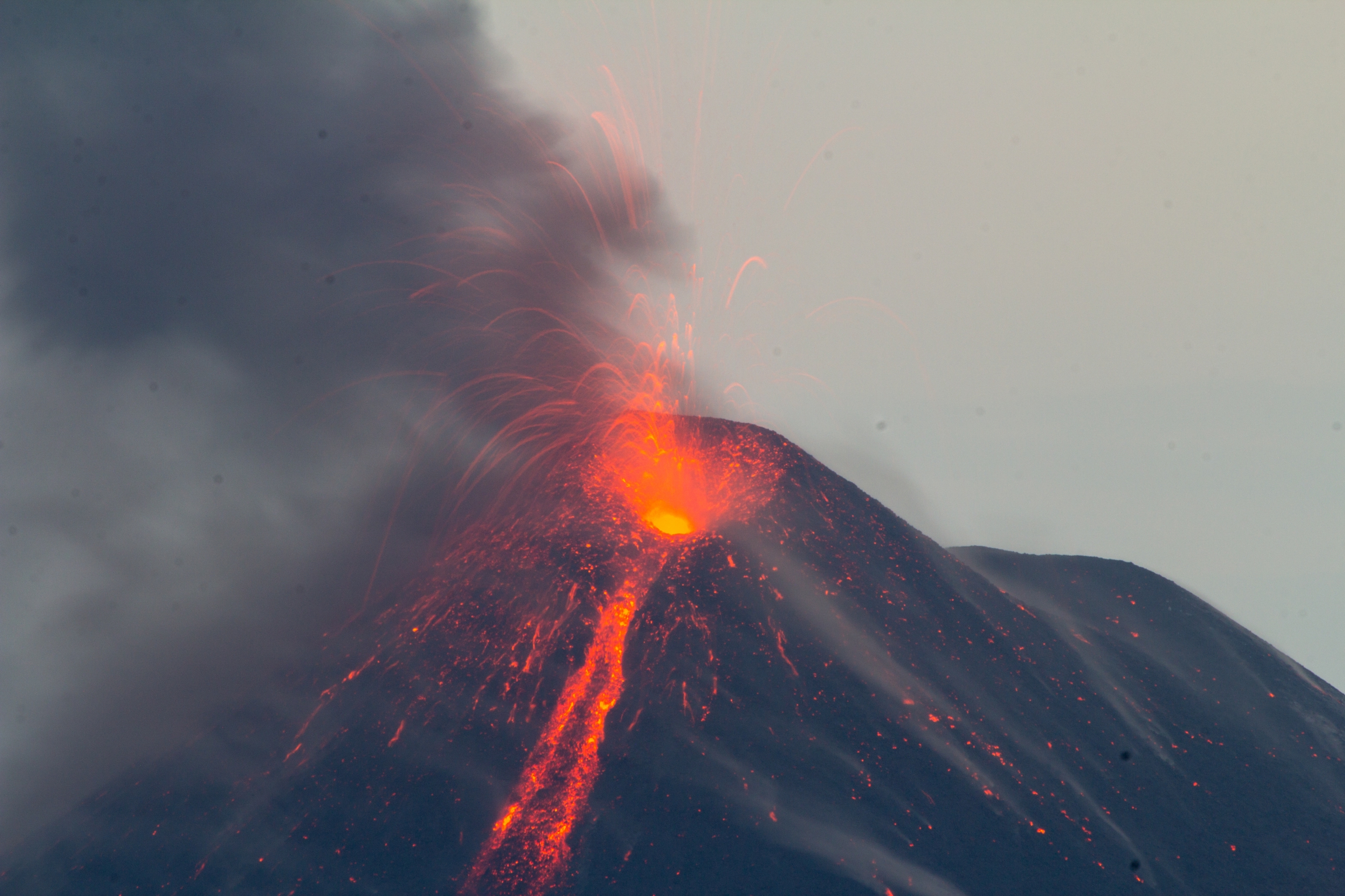
The Island of Krakatoa is one of the most deadly volcanoes in recorded history. The paroxysms of the final hours of Krakatoa on 27th August 1883 culminated in the obliteration of over 70% of the island and was heard up to 5,000km away. This generated a mega-tsunami with 30 metre-high waves that claimed an estimated 36,000 lives, and fatalities recorded up to 3,000 kilometres away.
In the 135 years since that cataclysmic event a new island, Anak Krakatau or the child of Krakatoa, has grown from the remnants of the old. Since the end of June 2018, Anak Krakatau has been erupting almost continuously (Fig.1 and 2c), building the cone to a height of over 400 m, generating very steep sides both above and below the ocean, such as the one that has now collapsed into the ocean with such devastating results.
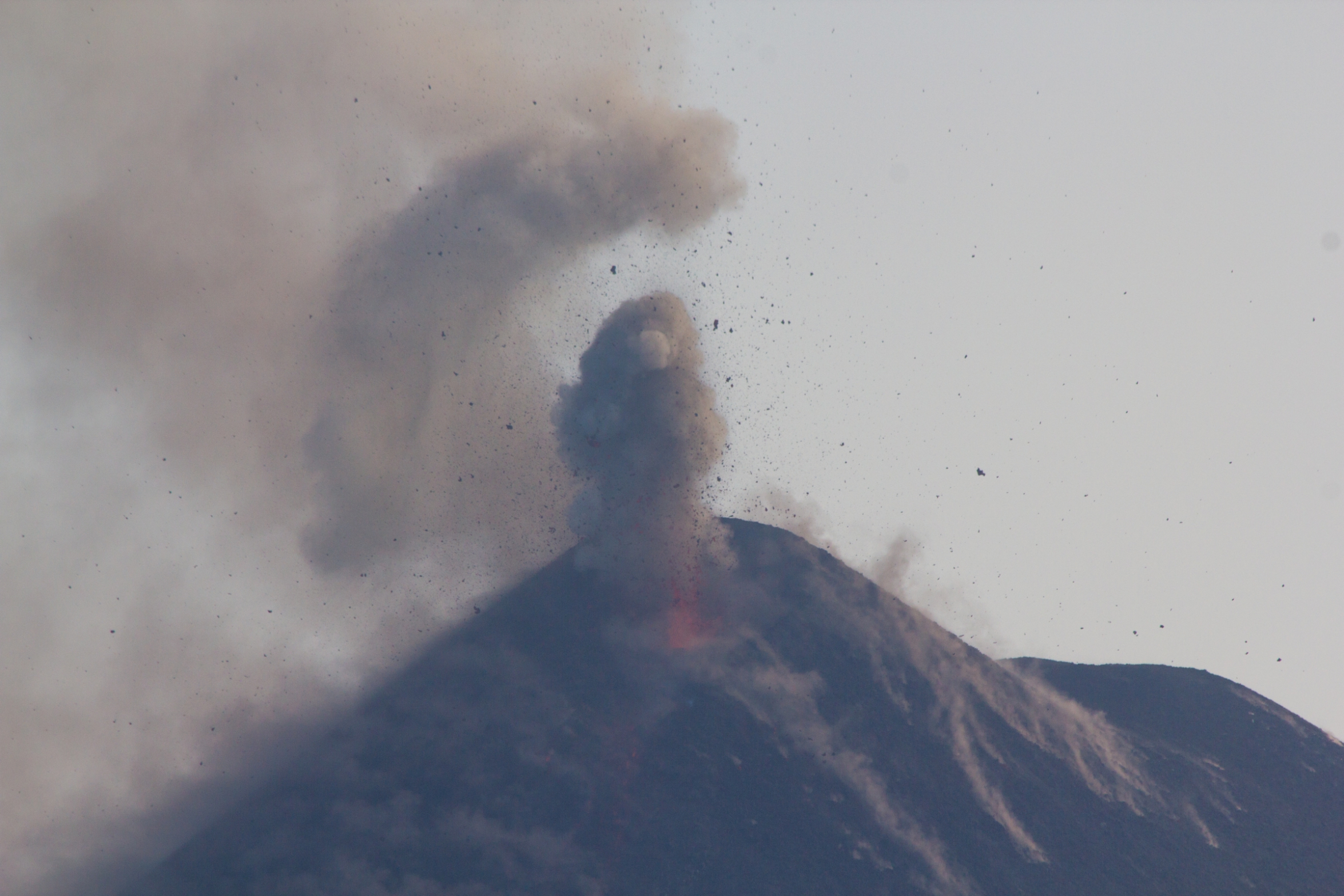
According to Professor Ben Horton, Principal Investigator (PI) at the Earth Observatory of Singapore (EOS), “Volcanic landslide-triggered tsunamis, although very rare, have happened before. As landslides can often involve vast amounts of rock, and they can fall into relatively shallow bodies of water, the tsunamis they produce can be breathtakingly high, and are sometimes nicknamed megatsunamis.”
“The world’s most potent megatsunami took place on July 9, 1958, when an earthquake-triggered landslide (or landslides) fell into Alaska’s Lituya Bay,” he added. “The ensuing tsunami reached a maximum height of 524 metres.” Krakatoa is not the only volcanic island known to produce such devastating tsunamis, as the decline of the Minoan civilization has been linked to the ~1600BC eruption and collapse of Santorini Volcano, Greece, and associated tsunami.
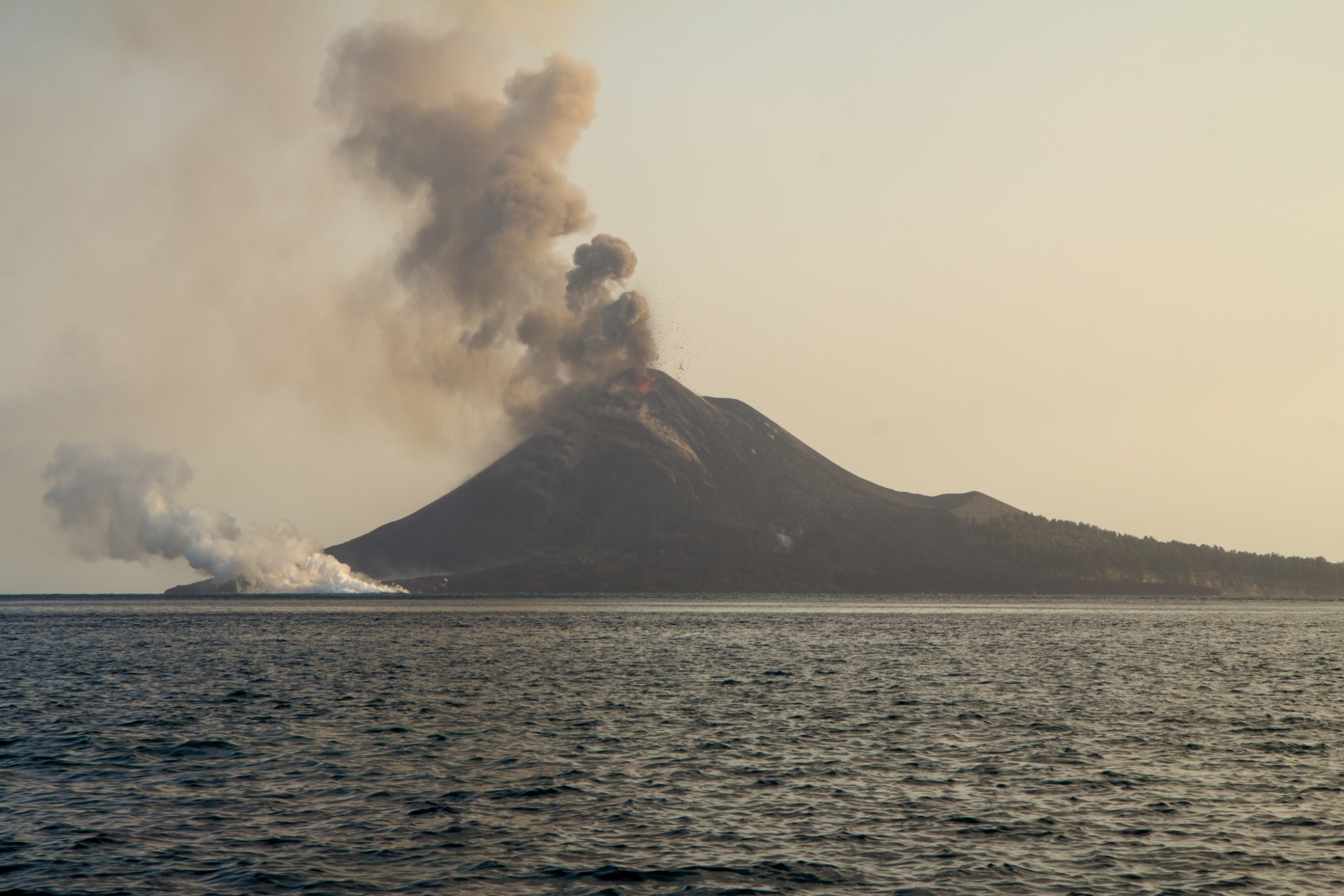
“Like all tsunami waves, the ones made by volcanoes have longer wavelengths than normal surf waves and they move at very high speeds through the open ocean,” said Associate Professor Adam Switzer, also a PI at EOS. “When they reach the coast, they rise dramatically in height and carry a huge mass of water over the coast. The heavy water mass and the high velocity at the shore cause the destruction we commonly see from tsunamis.
“The scariest thing about volcanic tsunamis is the warning signs are often very subtle. If the tsunami was generated by a submarine landslide, it is unlikely there would be an explosion or notable earthquake. The wave would literally appear at the surface and make its way to shore,” Assoc Prof Switzer explained. “The only warning sign would be the volcanic activity itself, which would have been going on for some time. This event underscores how little we know about tsunamis generated by volcanoes.”
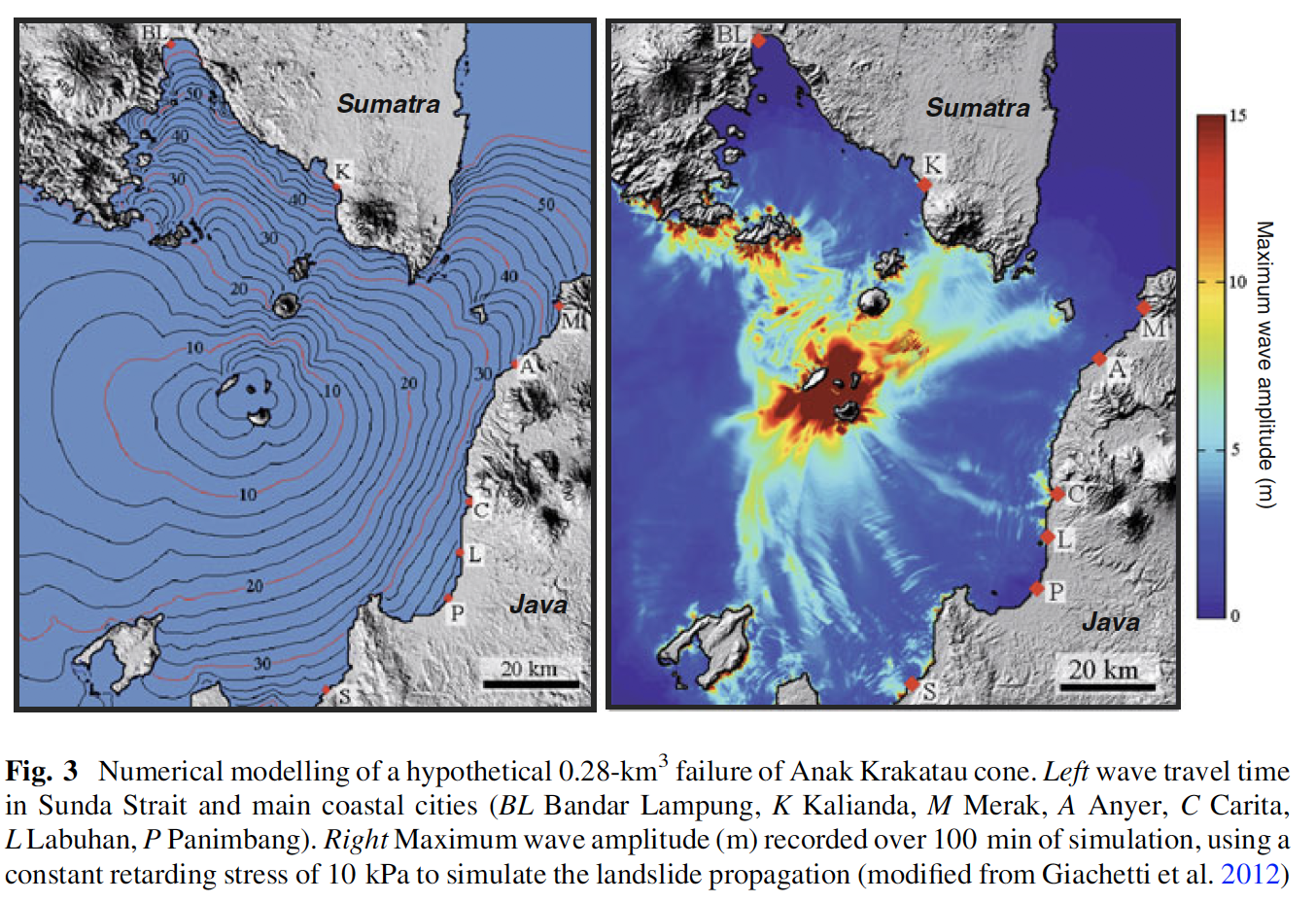
As there was no earthquake associated with this tsunami, there was no advanced warning – in other circumstances, the earthquake is the warning. Previous work conducted at EOS (Paris et. al.2014) on volcanic tsunami hazard in South East Asia had highlighted the potential tsunami risk from a flank collapse at Anak Krakatau modelled in Giachetti et. al.2012 (Fig. 3), with tsunamis reaching the shore in approximately 30 minutes, which fits with observations from this event.
In the short term, the tsunami risk is still high. As the volcano is violently erupting, the potential for another slope-collapse cannot be negated. Accordingly, residents in the area are being warned to avoid low-lying areas. In the longer term, a new tsunami warning system will be up and running next year, and further work needs to be done on understanding the hazards associated with volcanic-generated tsunamis.